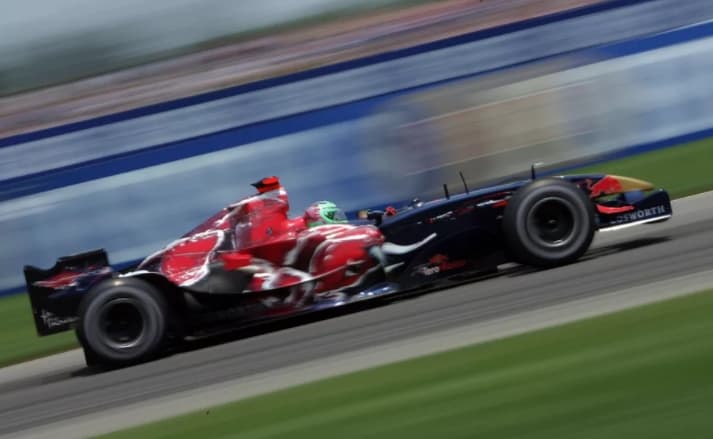
Investing legend Warren Buffett once wrote that “someone is sitting in the shade today because someone else planted a tree a long time ago.” I think that quote describes the power of investing in stocks maybe better than any other. It often starts out very small, and it can take a long time. But the end result can be much, much bigger. The hard part is finding the best stocks to buy, and then staying the course.
A great starting point is businesses with a proven track record of success that will still be in-demand well into the future. When you further screen for dividend stocks — especially companies with a history of dividend growth — your chances of getting the “biggest trees” get even better.
Here are three top stocks that meet these criteria:
| Company | Dividend yield | Primary business |
|---|---|---|
| Brookfield Infrastructure Partners (NYSE:BIP) | 4.2% | Owns and operates infrastructure assets |
| Caretrust REIT (NASDAQ:CTRE) | 3.7% | Seniors and healthcare real estate |
| Pattern Energy Group (NASDAQ:PEGI) | 6.2% | Renewable power producer |
My top stock in an overlooked, multitrillion-dollar industry
Infrastructure, on the surface, sounds like about as boring a business as there is. But over the next two decades, it is estimated that global infrastructure spending will need to top $80 trillion to meet humanity’s needs.
There are two things driving this anticipated long-term spending spree on global infrastructure. The first is necessary spending to replace, improve, and expand aging infrastructure in developed countries like the U.S. and Europe. The second — and bigger — driver is the expansion of the global urban middle class. Over the next couple of decades, the world’s population is expected to grow by more than 1 billion people, and essentially all of that growth will be middle class people living in urban environments. It’s going to take a lot more water, transportation, telecommunications, and energy infrastructure to meet the needs of this burgeoning group.
And that’s absolutely perfect for Brookfield Infrastructure, which already has an incredible track record of growth. Since going public almost 12 years ago, it has invested billions to acquire and expand its infrastructure asset base, generating massive cash flow growth:

And investors have profited handsomely from this cash flow growth. Brookfield Infrastructure has increased the dividend more than 750%, which, along with share price growth, has resulted in an incredible 531% in total returns. That’s almost triple the returns generated by the S&P 500 over the same period.

Most importantly, I expect investors can expect it will continue delivering market-beating returns. First, we have the gigantic tailwind described above, that will require more infrastructure development in the decades ahead than in all of human history. Second — and even more important — Brookfield Infrastructure has a proven, talented management team that is incredibly disciplined with capital allocation.
That process is why it has delivered the cash flow growth and total returns investors have profited from since going public, and why it should continue to deliver for investors in the decades to come.
A small company in the middle of a massive trend
Millennials have started coming into their own as a financial power. The most-populous age cohort in the U.S., millennials will spend the next two decades largely at the driver’s wheel of the country’s economy. But their Baby Boomer parents, who are aging and retiring in record numbers, will continue to affect healthcare and housing for decades to come.
It is estimated that between 2010 and 2030 — the period when the oldest and youngest boomers turn 65 — America’s senior population will double from 40 million to 80 million. Moreover, they’re also expected to live longer than prior generations. A combination of more active lifestyles and improved medical care will double the 80-plus cohort over the same period.
To meet the housing and healthcare needs for the growing senior population, it will require a significant increase in the number of properties. This includes both retirement — active retirement and assisted living — communities, and skilled nursing facilities. Caretrust REIT, the small seniors housing and skilled nursing property owner, is maybe the best-positioned REIT — real estate investment trust — to profit from this enormous trend.
Over the next decade, Caretrust is set to continue the growth it’s already delivered since going public. As of the company’s second-quarter earnings call in August, it owned 213 properties in 28 states, more than double the 94 it owned in 2014 after its spin-off from The Ensign Group. Since that spinoff, Caretrust has generated 313% in total returns for its shareholders.
Like Brookfield Infrastructure, much of that growth is the product of an excellent management team, that takes a disciplined approach to capital allocation, refusing to overpay for assets simply to say “we are growing!” This can result in extended periods of time when the company doesn’t make many acquisitions. In 2018, for example, the company spent only $116 million over the full year, while 2019 has been its biggest year yet for new investments. Only halfway through the year Caretrust has already spent $305 million, and management expects to invest over $400 million in new properties before year-end.
At recent prices, Caretrust isn’t exactly cheap, trading for over 17 times the midpoint of the company’s full-year funds from operations guidance and with its dividend yield about the lowest it’s been since instituting a quarterly payout.
But even with the risk of overpaying, investors looking for a decades-plus investment opportunity might be making a mistake holding out for a better price. In 10 or 20 years’ time, I expect the growth Caretrust delivers to more than make up for buying it at what could be a slight overvalue today.
Powering the future
Renewable energy like wind and solar is no longer the stuff of early adopters and futurists, only cost-effective because of government subsidies. Over the past decade, technological innovation has made these sources of renewable energy more efficient, more reliable, and cheaper than ever. We are already at the point where, in many cases, wind and solar are cheaper energy sources than coal, nuclear, and older oil and natural gas power plants.
It gets better. It’s expected that continued innovations will make wind and solar cheaper than all but the newest, most-efficient natural gas power plants within a decade (and it’s not impossible that even the cheapest natural gas plants will be surpassed by renewables in the near future). Even the argument that wind and solar can’t meet the “base-load” needs of the energy grid since neither is available all the time is weakening. Energy storage costs are falling, and efficiencies are improving, and within the next decade, we could see an inflection point where renewables, paired with energy storage, are cheaper than any other source of electricity.
That makes a company like Pattern Energy an ideal multi-decade investment. The company’s business is owning and operating utility-scale renewable power facilities, and then selling that power to utilities and industrial power users, on long-term — typically 20-year — contracts.
For investors, the biggest draw is its sizable yield, which is over 6% at present, paid for by the consistent, predictable cash flows from the company’s long-term power purchase agreements. It’s also likely that the company will be able to grow that dividend substantially in the decades ahead, as it acquires and develops new power facilities.
Pattern isn’t without some risk. The company is paying out nearly all of its cash flows to cover the existing dividend, and that gives it little margin for error if something goes awry and has kept it from increasing the payout for almost two years. It has a plan to boost cash flows — a plan that’s working so far — and its management team has proved very capable at buying power facilities that generate solid returns.

But until it gets to at least an 80% cash payout ratio — meaning it generates 20% more cash than it needs to cover the dividend — investors can’t count on a dividend increase and there’s still some risk it has to cut the payout to free cash up to make acquisitions. At this point in the turnaround, I think that’s a pretty remote possibility, but it’s a risk you should consider before investing. Yet even with that risk, Pattern Energy is one of my top “own forever” stocks.
Once it gets past this rough patch, I expect dividend increases — this time inline with cash flow growth — to return. With a massive growth market for renewable energy, I expect investors who buy Pattern today and hold for decades will be incredibly glad they did.
























